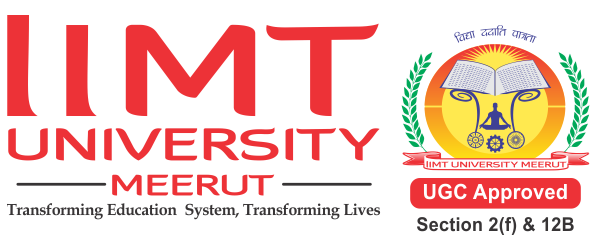❖ Introduction
Naturopathy and Allopathy are two distinct approaches to healthcare that have evolved over time with different philosophies and methodologies. While both aim to promote health and treat illnesses, they differ significantly in their principles, treatment methods, and overall perspectives on healing. In this comparison, we will explore the fundamental concepts, historical origins, treatment approaches, and criticisms of both Naturopathy and Allopathy in order to gain a comprehensive understanding of their differences and similarities.
➢ Naturopathy:

Naturopathy is a holistic approach to healthcare that emphasizes the body’s inherent ability to heal itself through natural means. It draws inspiration from traditional healing practices and incorporates various natural therapies, including herbal medicine, nutrition, hydrotherapy, acupuncture, and lifestyle counseling. The core principles of naturopathy include:
- The Healing Power of Nature: Naturopathy believes that the body has an innate ability to heal and maintain health, given the right conditions and support.
- Identify and Treat the Root Cause: Instead of merely addressing symptoms, naturopathic practitioners aim to identify and treat the underlying causes of illnesses to achieve long-term healing.
- Do No Harm: Naturopaths prioritize non-invasive and gentle therapies that minimize harm to the body and avoid suppressive treatments.
- Treat the Whole Person: Naturopathy considers the physical, mental, emotional, and spiritual aspects of an individual to develop personalized treatment plans.
- Doctor as Teacher: Naturopaths see their role as educators, guiding patients to make informed decisions about their health and lifestyle.
Naturopathy’s historical roots can be traced back to ancient healing traditions, including Ayurveda, Traditional Chinese Medicine, and European herbalism. The modern naturopathic movement gained momentum in the late 19th and early 20th centuries, primarily in Europe and North America. Critics of naturopathy often raise concerns about the lack of scientific evidence for some of its practices, potential delays in seeking conventional medical treatment, and the need for rigorous regulation within the field.
Naturopathy is a holistic approach to healthcare that celebrates the body’s inherent ability to heal and maintain balance when provided with the right tools and conditions. Its foundation lies in the belief that the healing power of nature can guide individuals toward optimal well-being. This approach draws inspiration from a rich tapestry of ancient healing traditions, including Ayurveda, Traditional Chinese Medicine, and European herbalism. Modern naturopathy, as we know it today, emerged in the late 19th and early 20th centuries, gaining momentum in Europe and North America.
One of naturopathy’s core tenets is the emphasis on identifying and treating the root causes of illnesses rather than merely addressing symptoms. This principle reflects a deep understanding that true healing comes from resolving underlying imbalances that disrupt the body’s natural equilibrium. Naturopathic practitioners take the time to explore an individual’s physical, mental, emotional, and spiritual aspects, crafting personalized treatment plans that encompass a range of natural therapies.

Herbal medicine, a cornerstone of naturopathy, harnesses the potent healing properties of plants to restore and optimize health. Herbs are carefully selected based on their specific effects on various body systems, and they are often combined to create customized formulations. Nutritional therapy plays a vital role in naturopathy, recognizing that a balanced and nourishing diet is essential for maintaining vitality and preventing disease. Through dietary adjustments and supplementation, naturopathic practitioners guide individuals toward choices that support their unique health goals.

Hydrotherapy, another key component of naturopathy, utilizes water in its various forms – hot, cold, or alternating – to stimulate circulation, detoxify the body, and promote healing. This approach draws from historical practices like balneotherapy and contrasts baths, which have been used for centuries to alleviate pain, improve circulation, and boost immune function.

Acupuncture, rooted in Traditional Chinese Medicine, involves the insertion of thin needles into specific points on the body to regulate the flow of vital energy or “qi.” This practice is believed to restore balance, reduce pain, and promote overall well-being. Naturopathic practitioners may also incorporate mind-body techniques, such as meditation, yoga, and stress reduction strategies, recognizing the intimate connection between mental and physical health.
Critics of naturopathy often express concerns about the lack of scientific evidence supporting some of its practices. While many natural therapies have shown promise in clinical studies, the field as a whole faces challenges in meeting the rigorous standards of conventional evidence-based medicine. Additionally, the variability in practitioner qualifications and training raises questions about the consistency and quality of naturopathic care. Despite these criticisms, naturopathy continues to gain popularity among individuals seeking a more holistic and natural approach to health and healing.
➢ Allopathy:

Allopathy, also known as conventional or Western medicine, is the dominant form of healthcare in most parts of the world. It is based on scientific principles, evidence-based practices, and the use of pharmaceutical drugs and surgical interventions to diagnose and treat illnesses. Allopathic medicine is rooted in the following principles:
- Pathology and Symptom Suppression: Allopathy focuses on diagnosing and treating specific diseases and symptoms using targeted interventions, such as medications, surgeries, and medical procedures.
- Evidence-Based Medicine: Allopathic treatments are supported by rigorous scientific research and clinical trials to ensure their safety and efficacy.
- Specialisation: Allopathic medicine includes various medical specialties, allowing practitioners to develop expertise in specific areas of healthcare.
- Emergency Care and Acute Treatment: Allopathy excels in emergency situations and acute care, providing immediate interventions to save lives and stabilize patients.
- Integration of Technology: Allopathic medicine utilizes advanced medical technologies, including diagnostic imaging, laboratory tests, and minimally invasive surgeries.
The origins of Allopathy can be traced back to ancient civilizations, with significant developments occurring in the Middle Ages and the Renaissance. The scientific revolution of the 17th century marked a turning point, leading to the systematic study of anatomy, physiology, and disease. The emergence of evidence-based medicine in the 19th and 20th centuries further solidified Allopathy’s dominance in mainstream healthcare. Critics of Allopathy often express concerns about overreliance on pharmaceuticals, potential side effects of treatments, and a sometimes narrow focus on symptom management rather than addressing underlying causes.
➢ Comparison:

- Philosophical Approach:
Naturopathy: Holistic and natural approach, focusing on supporting the body’s self-healing abilities and addressing underlying causes.
Allopathy: Scientific and evidence-based approach, emphasizing targeted interventions and symptom management.
- Treatment Modalities:
Naturopathy: Utilizes natural therapies like herbal medicine, nutrition, lifestyle counselling, hydrotherapy, and acupuncture.
Allopathy: Relies on pharmaceutical drugs, surgeries, medical procedures, and advanced technologies.
- Patient-Centred Care:
Naturopathy: Treats the whole person and encourages active patient involvement in the healing process.
Allopathy: Often follows a disease-centred model, with a strong emphasis on medical interventions.
- Prevention vs. Treatment:
Naturopathy: Focuses on prevention through lifestyle changes and natural therapies to maintain health.
Allopathy: Emphasizes both prevention and treatment of diseases, using pharmaceuticals and medical interventions.
- Evidence and Research:
Naturopathy: Some practices lack robust scientific evidence, leading to debates about their efficacy.
Allopathy: Relies heavily on evidence-based medicine, with treatments supported by rigorous research and clinical trials.
- Regulation and Training:
Naturopathy: Regulations vary by country, and training programs range from diploma courses to formal degrees.
Allopathy: Highly regulated, requiring rigorous medical education, licensing, and specialization.
- Acute vs. Chronic Care:
Naturopathy: Effective for chronic conditions, often emphasizing lifestyle changes and natural therapies.
Allopathy: Particularly strong in acute and emergency care, surgical interventions, and pharmaceutical treatments.
➢ Critiques and Controversies:
Naturopathy:
✔ Lack of scientific evidence for some practices.
✔ Potential delays in seeking conventional medical treatment for serious conditions.
✔ Variability in practitioner qualifications and training.
✔ Overemphasis on natural therapies without considering potential risks or interactions.
Allopathy:
✔ Overreliance on pharmaceutical drugs and potential side effects.
✔ Focus on symptom management rather than addressing underlying causes.
✔ Expensive medical interventions and treatments.
✔ Limited time for doctor-patient interactions in a busy healthcare system.
❖ Conclusion:
Naturopathy and Allopathy represent two distinct approaches to healthcare, each with its own set of principles, methodologies, strengths, and limitations. Naturopathy emphasizes holistic healing through natural therapies and lifestyle changes, while Allopathy relies on evidence-based medicine, pharmaceuticals, and advanced medical technologies. Both approaches have their place in the healthcare landscape, with Naturopathy excelling in prevention and chronic care, and Allopathy being particularly effective in acute and emergency situations. Ultimately, the choice between these approaches depends on individual beliefs, preferences, and the nature of the health condition being addressed. It is important for patients to make informed decisions and, in some cases, consider integrating elements from both approaches for comprehensive and effective healthcare management.













